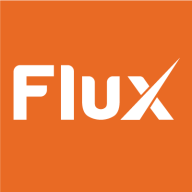

Find out in this report how the two Workload Automation solutions compare in terms of features, pricing, service and support, easy of deployment, and ROI.

Automic Automation is employed for migration assistance, digital business automation, integration with platforms, ITIL process workflows, batch processing, disaster recovery, scheduling ERP batch jobs, and automation within finance and telecom sectors.
Businesses implement Automic Automation across on-premises and cloud infrastructures, supporting SAP, mainframes, host systems, and other environments. Valued for its versatility and out-of-the-box integration capabilities, it enhances automation efficiency and reduces operational costs. The platform is known for its robust object-oriented workflow, zero-downtime upgrades, CI/CD pipeline integration, and multi-client architecture. Enhanced stability, scalability, user-friendliness, and compliance are notable benefits.
What are the key features?Automic Automation is widely used in finance and telecom industries, addressing unique challenges and demands. It integrates with Broadcom products and supports SAP environments, ensuring well-rounded automation and operational efficiency. While technical support and vendor assistance could improve, businesses find value in its scheduling, deployment options, and workflow visibility. The industry's capability to manage cloud systems and SaaS deployment helps in mitigating disaster recovery issues and facilitates smoother ITIL process workflows.
Flux is an essential tool for data migration, system integration, and real-time data processing, offering scalable solutions that support large datasets and streamline workflows.
Users leverage Flux for managing complex environments with large datasets, automating workflows, and enhancing data consistency across platforms. Its capabilities in real-time data processing, synchronization between different systems, and operational efficiency improvement are frequently highlighted. Users commonly find it flexible and reliable, appreciating its performance in managing scheduled tasks and simplifying data orchestration.
What are Flux's key features?Flux is used across industries like finance, healthcare, and logistics for streamlined operations and optimized data management. In finance, it supports data integrity and compliance. Healthcare organizations use it for real-time patient data processing and integration with various systems. Logistics benefit from improved tracking and coordination.
We monitor all Workload Automation reviews to prevent fraudulent reviews and keep review quality high. We do not post reviews by company employees or direct competitors. We validate each review for authenticity via cross-reference with LinkedIn, and personal follow-up with the reviewer when necessary.